ARTICLE AD BOX
Helen Briggs
BBC environment correspondent•@hbriggs

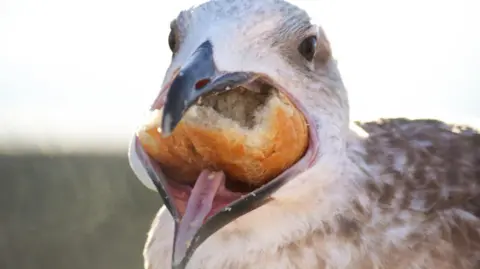 Getty Images
Getty Images
Gulls are under pressure with natural populations in decline
From pilfering chips to swallowing whole starfish, gulls are known for their voracious appetites.
However, one scientist was so astounded to see pictures on social media of gulls eating "weird and wonderful things" that she launched a citizen science project to study their shifting diets.
University of Salford ecologist Dr Alice Risely wants people to upload their snaps of hungry gulls to the project's website, Gulls Eating Stuff.
"By studying gulls' diet, we can learn more about their behaviour, their role in ecosystems and the pressures they face in a changing world," she said.
UK seabirds face threats from warming oceans, overfishing and avian flu.
Gull populations are in decline, with several species on the UK red list of conservation concern.

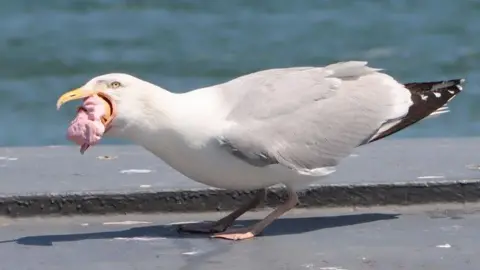 Gill Stafford
Gill Stafford
A gull enjoying a stolen ice cream in Llandudno, Wales
Some gulls are coming to live closer to people, adding human leftovers to their natural menu of fish, crabs, starfish and earthworms.
The birds may be flocking to urban areas to find food to feed their chicks during the breeding season, switching back to a natural diet once their youngsters have fledged.
Alternatively, gulls may be relying on human leftovers for much of the year as the natural food supply dwindles.
"The fact is we just really don't know – there is very little data," said Dr Risely.
"This is why we wanted to exploit this resource of online photos to try and help us understand what the gulls are eating, and if there are any patterns we can find."

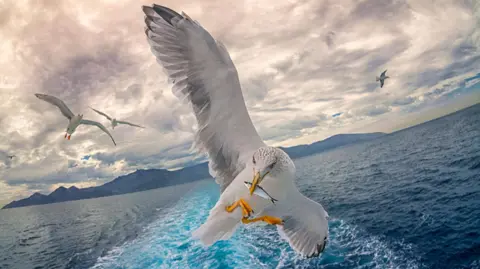 Getty Images
Getty Images
Fish and other seafood is the natural diet of gulls
One particularly striking photograph shows a gull eating a baby puffin.
It was taken by scientist Samuel Schmidt on a trip to the Farne Islands in Northumberland.
Getting more information on what gulls are eating - in proximity to people and as the climate changes - "could be very enlightening", he said.
"The gull wasn't malicious; it was just hungry," he added.
Gulls are known to eat other birds, including pigeons.

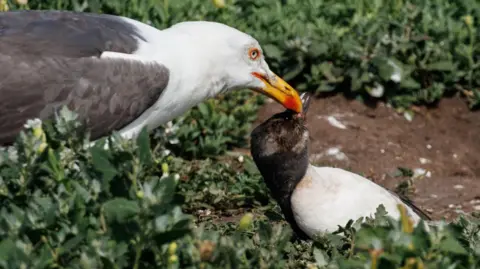 Samuel Schmidt/CitSci
Samuel Schmidt/CitSci
A gull drags away a dead puffin chick on the Farne Islands, Northumberland
The UK is known for its huge colonies of seabirds nesting on cliffs - but populations are plummeting amid a host of pressures, from climate change to a lack of food.
Gulls are in trouble in their natural spaces - and some species, such as herring gulls and lesser black-backed gulls are seeking refuge in coastal cities.
There is very little data on the number of urban gulls - but natural populations are regularly monitored, showing big declines.

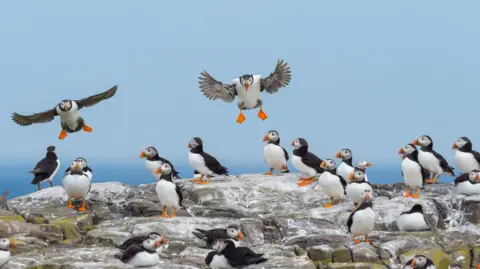 Getty Images
Getty Images
The UK is known for its seabirds, such as the puffin
Three gull species are on the UK red list of conservation concern:
- The great black-backed gull - a very large gull with black wings and a powerful beak that nests around the coast, on clifftops, rooftops and islands
- The common gull - a medium-sized gull scarcer than its name suggests that nests around lakes in the north of England and Scotland
- The grey-backed and pink-legged herring gull.
Follow Helen on Bluesky.

 1 month ago
28
1 month ago
28
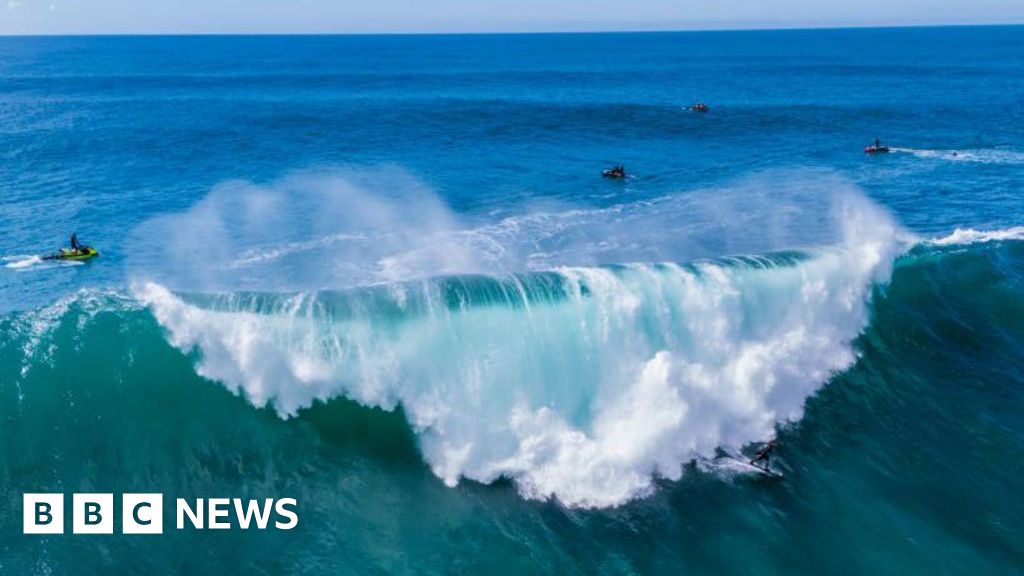

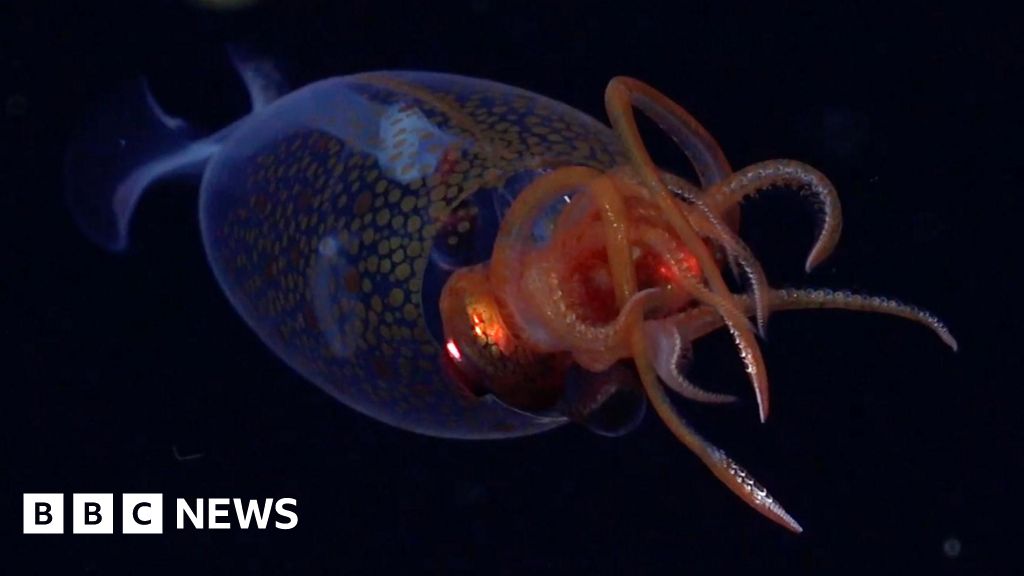


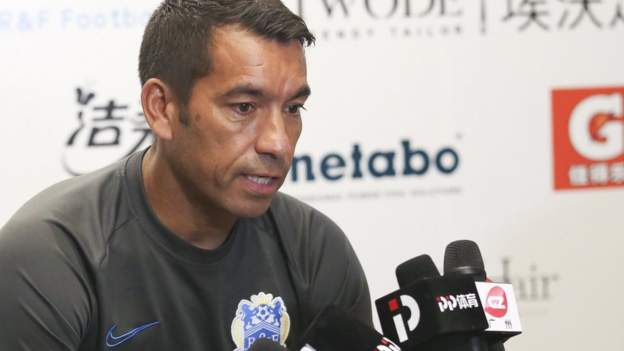

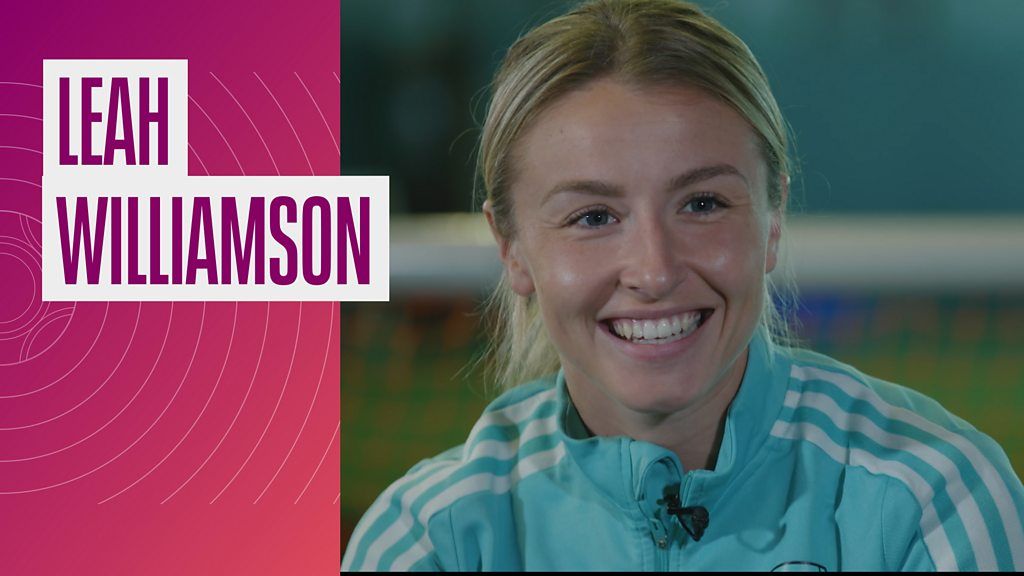
 English (US) ·
English (US) ·